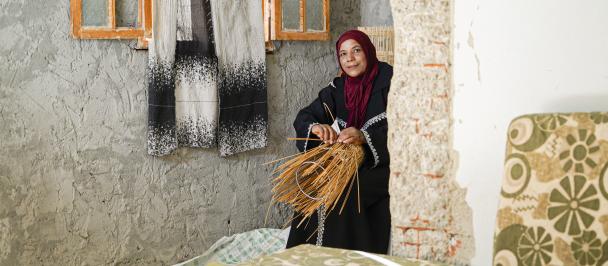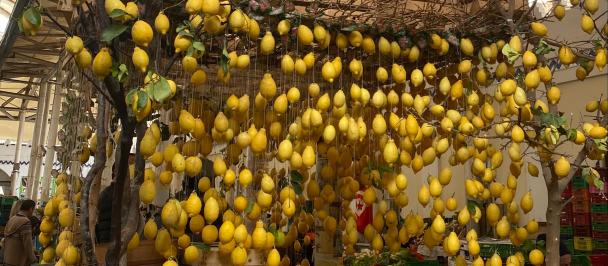Haytham Msabhi, Accelerator Lab, UNDP Tunisia,
The Great Mosque of Kairouan: In search of Lost Water
25 septembre 2023
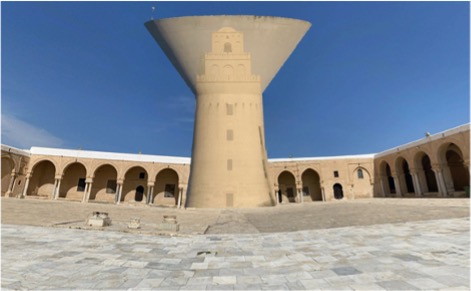
The last four seasons of drought and scarce rainfall have severely depleted Tunisia's water resources and reserves. Like all countries in the Arab States region, water security is becoming the most urgent and vital issue.
As water scarcity is one of the frontier challenges of UNDP Tunisia, the Accelerator Lab has joined forces with the environment and climate team to explore new entry points, including within the framework of the ongoing programme in Kairouan.
Together, we made a field visit to the city of Kairouan to explore new initiatives and experimentations.
On the road to Kairouan
On our way to Kairouan, I couldn't stop thinking about the city's historical importance and the enchantment it exerts on its devotees. Because Kairouan, like all millenary cities, has its devotees: Built in the 7th century and as the 1st Muslim city in North Africa, it is also considered Islam's 4th holiest city.
I watched the landscape slowly change. The green, rocky mountain hills of the North were replaced by flatter landscapes, until we reached Kairouan, where the geography flattened out. "Le plat Pays", as Jacques Brel called it, but also the "land of steppes" in local vocabulary:vast and arid steppes. A few kilometers before the town, a vast plain laid before us, with wadis generating small circuits of dried-up water. We could feel the water, but only in its traces, dynamic lines that curved across the plain, gently embracing its landforms and plants. Decades ago, when rains were less scarce, access to the town was blocked by runoff, and visitors would have to wait for the rain to subside before they could enter.
Just before arriving, on the right-hand side of the road, we see enormous reed fields. We will later understand that these wild reeds grew following the installation of a water purification plant. Leaks from this plant, all along the road, created this field of reeds used by the inhabitants of Metbasta, a small village at the entrance to Kairouan, in various informal but vital economic activities.
Between Geography and History
The building of a new city heralds a new historical cycle and the affirmation of a collective will to build a new civilization. Much has been said about why the builders of Kairouan chose this site. The most widespread hypothesis is because of its distance from the sea (60 km) and its arid geography, similar to that of Arabia, the builders' homeland. Professor Fathi Bahri, Inspector General of the National Heritage Institution, however refuted this hypothesis during our discussions. For him, it's illogical that these builders would have fled the desert of their homeland to settle in another desert. He asserted that the choice of the Kairouan site could only be justified by the presence of water and ancient hydraulic installations, notably Roman, which enabled these conquerors to settle.
Kairouan, like all the old cities around the Mediterranean, has its own legend when it comes to its genesis. Here again, we find water. For example, our discussions with the inhabitants of the Grand Mosque district provided us with some interesting insights onits relationship with water: there is a well just behind the side facade of the Grand Mosque, known as "Puit Tekfa"(picture below). The word "Tekfa" is derived from the Arabic word "Yakfi", meaning "Enough". Legend tells us that the builders of Kairouan, at the time of the construction of the great mosque (the oldest building in the city), began by digging a well and were surprised by the power of the water that gushed out of the earth that they shouted "Enough Enough!". Water was so powerful that it was enough to feed everyone.

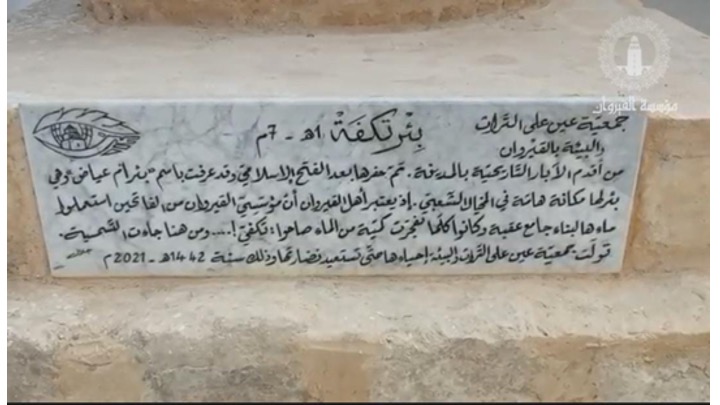
The Tekfa well, located in front of the Mosque’s lateral façade, was restored by a local association.
What Archaeology tells us
While the Grand Mosque is the city's oldest monument, there's another one just as emblematic. These are the great Aghlabid basins known as "Feskia", built in the 9th century. These basins were thought to be large reservoirs for storing rainwater. Professor Fathi Bahri explained that recent archaeological discoveries suggest that these basins were connected to drinking water sources 30 km away via underground aqueducts dating back to the Roman era. Even more exciting, archaeological excavations suggest that the "Feskias" supplied drinking water to the city by conducting it to the Great Mosque, which also served as a storage and distribution station for the surrounding buildings via a complex system of underground aqueducts.

Even if these hypotheses put forward by archaeologists are still at an early stage, they reinforce our intuition about the intimate and vital relationship between the city and water. In fact, Kairouan is not only a historic city with interesting hydraulic vestiges; the whole city itself is truly a great hydraulic construction conceived by and for the conservation of water. Indeed, ancient historians called it "Madinat Al-Mawajel", the city of “Magels” (majels are domestic water storage cisterns), thereby representing a huge paradigm shift in the way we perceive Kairouan
A psychogeographical analysis of the site
The closer we got to the Grand Mosque and its surroundings, the more emotionally charged the place became. Our quest for water could only be completed by immersing ourselves in the neighborhood, understanding its ambience and interacting with the community. To this end, we adopted the "situationist method" of psychogeographical exploration.
Psychogeography, as defined by Guy Debord, is "the study of the precise laws and specific effects of the geographical environment, consciously organized or not, on the emotions and behavior of individuals.". Urban driftingis especially interesting for us, as it opens up paths to beahvioral insights on a city-wide scale, and offers a new grid for analyzing and understanding the city and its ambiences beyond administrative and bureaucratic zoning.
As we drifted around the mosque, we discovered 5 psychogeographical entities.Before describing them, it's worth noting that Kairouan's Grand Mosque district embodies the synthesis of the city's intrinsic contradictions: it is at once the place where the city's most conservative values and traditions are safeguarded, and the favorite place for the young generations to meet, have fun and socialize in defiance of traditional codes of conduct. Its users are a melting pot of inhabitants from old Kairouanese families, local users who generally come from neighboring districts to find shelter and entertainment next to the mosque, local and foreign tourists and, finally, the merchants established in the alley next to the mosque's side façade, where its main entrance is located.
Psychogeographical Entities
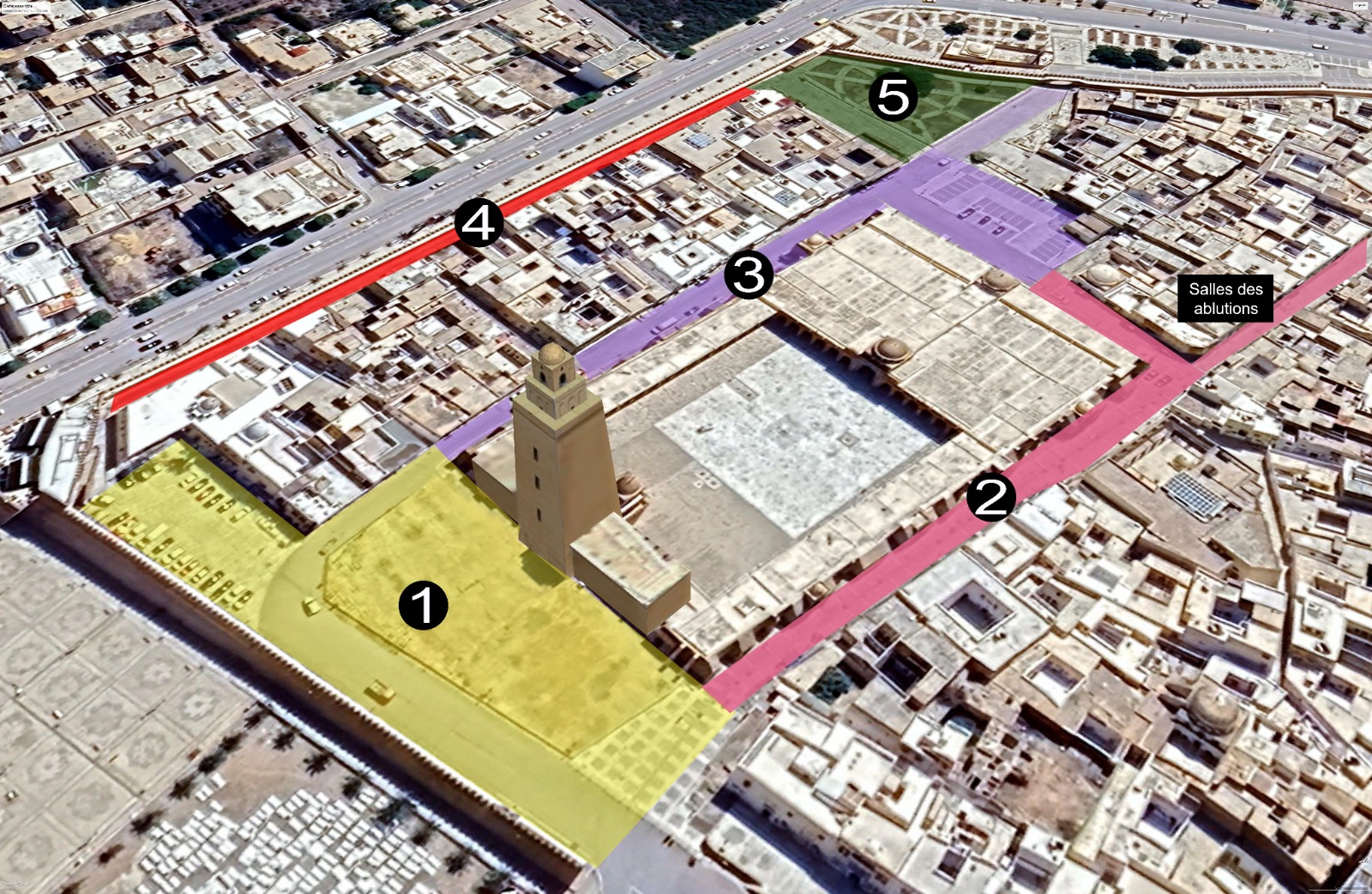
The main square: thanks to the opening of the city's 1st mixed youth café and a restaurant prized by locals, this square has become the 1st meeting place for the city's inhabitants, especially young people Major religious and cultural events are also held in this area, while tourist buses are parked there; it's therefore no surprise that this is the place to discover the city. The dominance of the great minaret over the square gives it a solemn, imposing air that always reminds us that the pleasures of the city are permitted, but always under the benevolent - if not authoritative - gaze of the great minaret.
Commercial street: This is where the architectural details of the mosque are gradually revealed, and where the mosque is accessed. The omnipresence of tourist stores in this alley invites passengers to stop, and the local merchants don't hesitate to engage them in a discussion to convince them to buy. This is a pedestrian-friendly passage, as it is difficult for cars to access due to the narrowness of the street and the pavement.
The connexion street: Symmetrically opposed to the commercial street in relation to the central axis of the mosque, this is a place of passage and connection that covers its second lateral façade. Above all, it is a passageway for vehicles, opening up the main square. Local residents tell us that vehicle traffic in both directions is a constant source of annoyance for them.
Narrow Street: A very narrow, hidden pedestrian passageway that is not easily revealed to those in a hurry. 200 meters of narrow line between the city walls and prestigious buildings belonging to the great Kairouan’s families. Some of them have been converted into popular guest houses, with exclusive views of the mosque.
The garden square:While the main square is the first place to discover the mosque and its surroundings, its smaller twin, the Matmar garden, is the culmination of it all. It enjoys easy access and a beautiful location between the ramparts, the houses, the mosque and the shops. Its dilapidated state, due to a lack of water and maintenance, has turned it into a black spot hated by its neighbors and sought after by users in search of privacy and shelter.
The quest for water
If the five psychogeographical entities are distinguished by different atmospheres and uses, water connects them all. If we cannot see it with the naked eye, it is perceptible and omnipresent through the traces left by the rain on the walls and the condemned wells we came across along the way. Moreover, while drifting in the area of the great mosque, we heard a small mechanical noise. When we asked the source of this noise, we were told that it is the sound of water pumps in houses: In fact, the flow of urban water is so weak that the owners are obliged to install pumps so that the water reaches the floor.
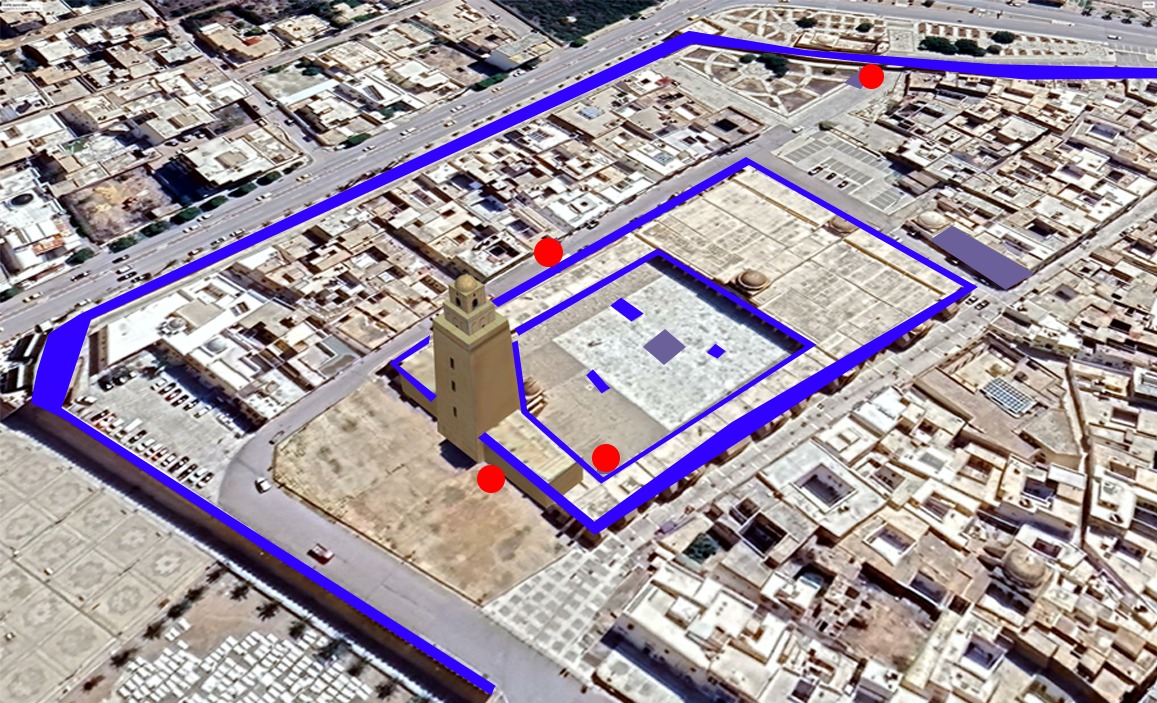
In Blue: rainwater accumulation surface (ramparts+ Mosque) // red circles: Condemned Wells
The old ramparts of the city are a perfect example of this water that we do not see but whose traces are visible. Just look up to see the old rainwater drainage system.

This water drainage system does not only exist on the ramparts, but it is also found inside the mosque, emptying the water further outside and inside the patio.

The patio of the mosque is a whole universe in itself: It plays the role of a large reservoir of rainwater.
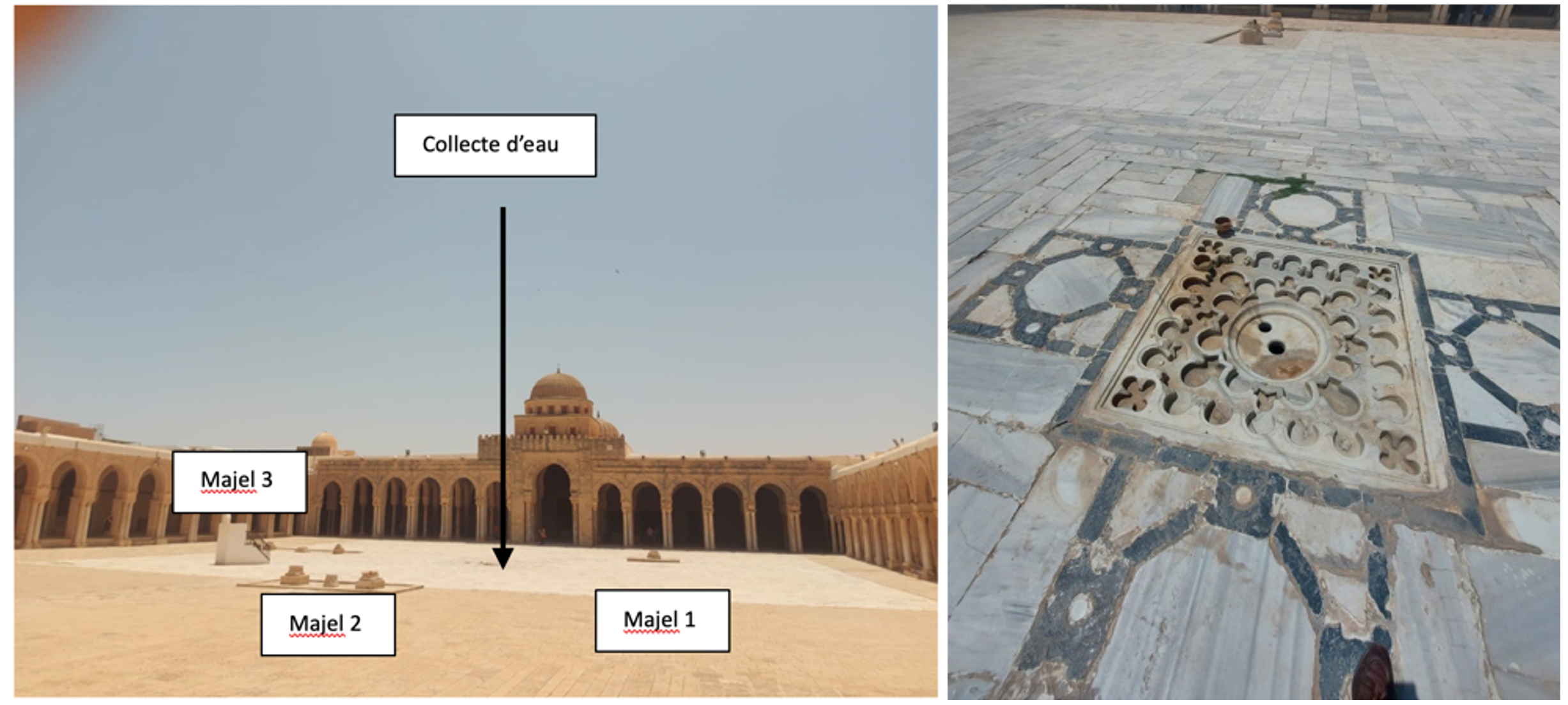
The entire patio is sloped to allow water to flow towards the collection point in the center, surrounded by three "Majels". Majels are traditional underground reservoirs. Historically, medieval historians called Kairouan "the city of Majels" in recognition of this water storage practice. Today, many experts are calling for a revival of this ancient practice, especially in the context of drought.
Nevertheless, the patio with its 3 majels remains a mystery: we don't know exactly what their storage capacity or connection system is. One thing is certain: every time it rains heavily, the patio and prayer room are flooded with water, forcing to pump the water out of the mosque with great difficulty. According to the inspector from the National Heritage Institute, this poses a serious threat to the mosque's structure.
This doesn't stop at the "majels", as there are also condemned wells outside and inside the mosque. The most recent was dug next to the Matmar garden for its irrigation, but is now dysfunctional due to lack of maintenance and, above all, the lowering of the water table, a sign of the surrounding drought.
The ablution room, an essential component of every mosque, is also an important landmark in the area, and one that is still poorly exploited, since ablution water is classified as "grey water" with considerable potential for reuse. Currently, ablution water is discharged into the sewer, mixed with wastewater.

The joyful experimentation
Psychogeography is not only an original method of spatial analysis, but also a detour of the city and its functions into playful, non-conformist situations. It does not provide "à la carte" solutions, but, like experimentation, it encourages reflexion on human fulfillment in the urban environment. Our journey to Kairouan in search of its lost waters did not disappoint... Between past and future, legend and reality, conservatism and the desire for emancipation. Kairouan's water enchanted us in all its states, with its hidden presence or felt absence. Now we are ready to engage with the city and experiment with the insights gained on this journey.
Hypothesis 1
There is a large cistern in the basement of the patio of the great mosque capable of satisfying the needs of irrigation and cleaning of the mosque and its surroundings.
Hypothesis 2
The discovery, in the mosque, of a basement acting as a cistern could radically change the user experience.

Hypothesis 3
The grey water pipe in the ablutions room could be separated from the wastewater pipe.
Hypothesis 4
Grey water from the ablutions room, together with rainwater, could feed an urban pool and create a new landscape.
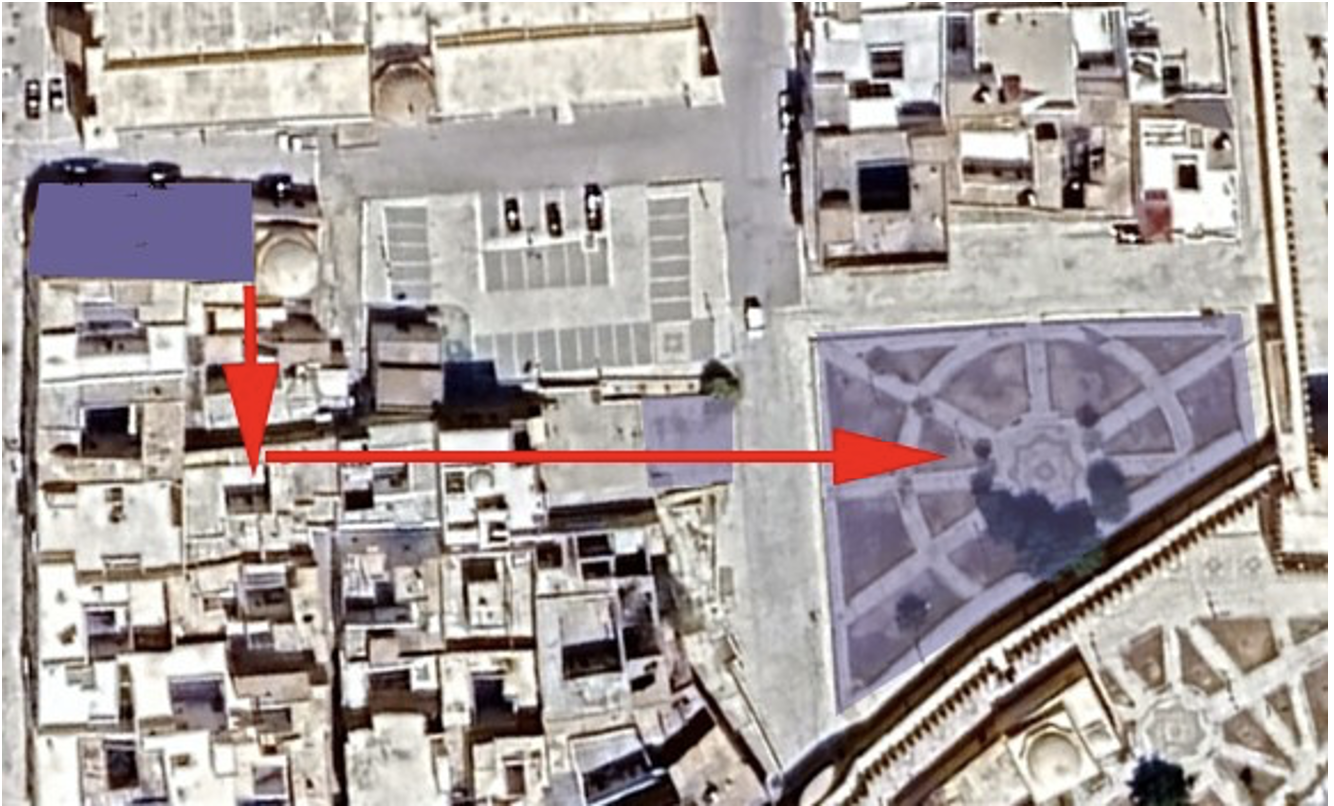
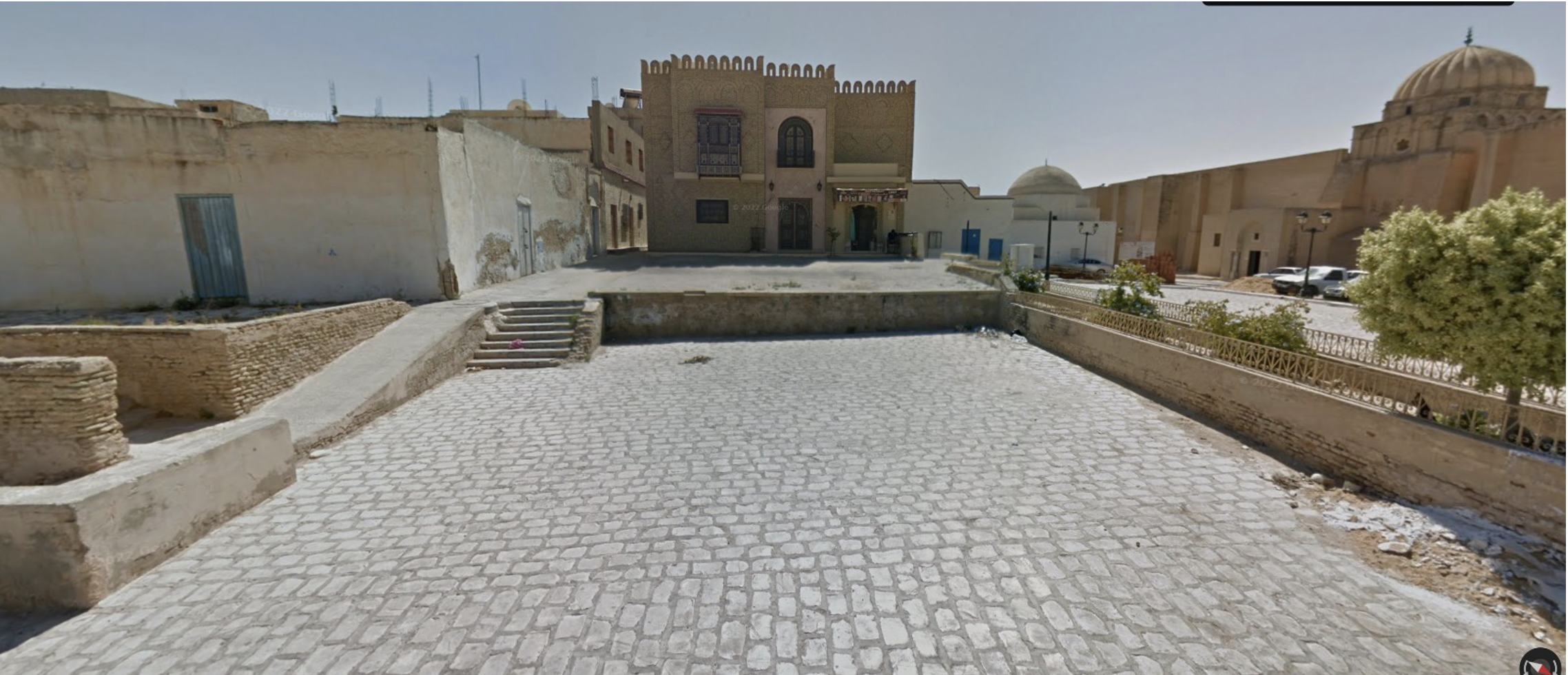
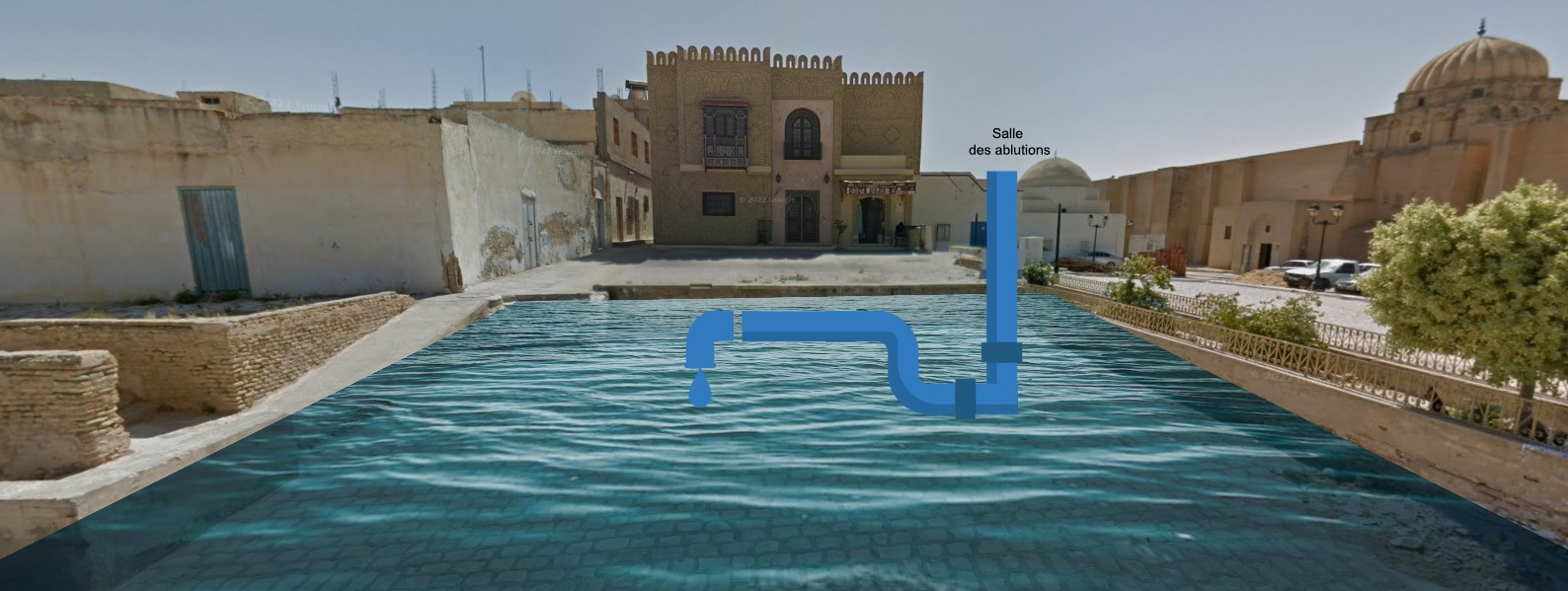
Hypothesis 5
The Matmar garden could be irrigated by collecting rainwater in the ramparts.
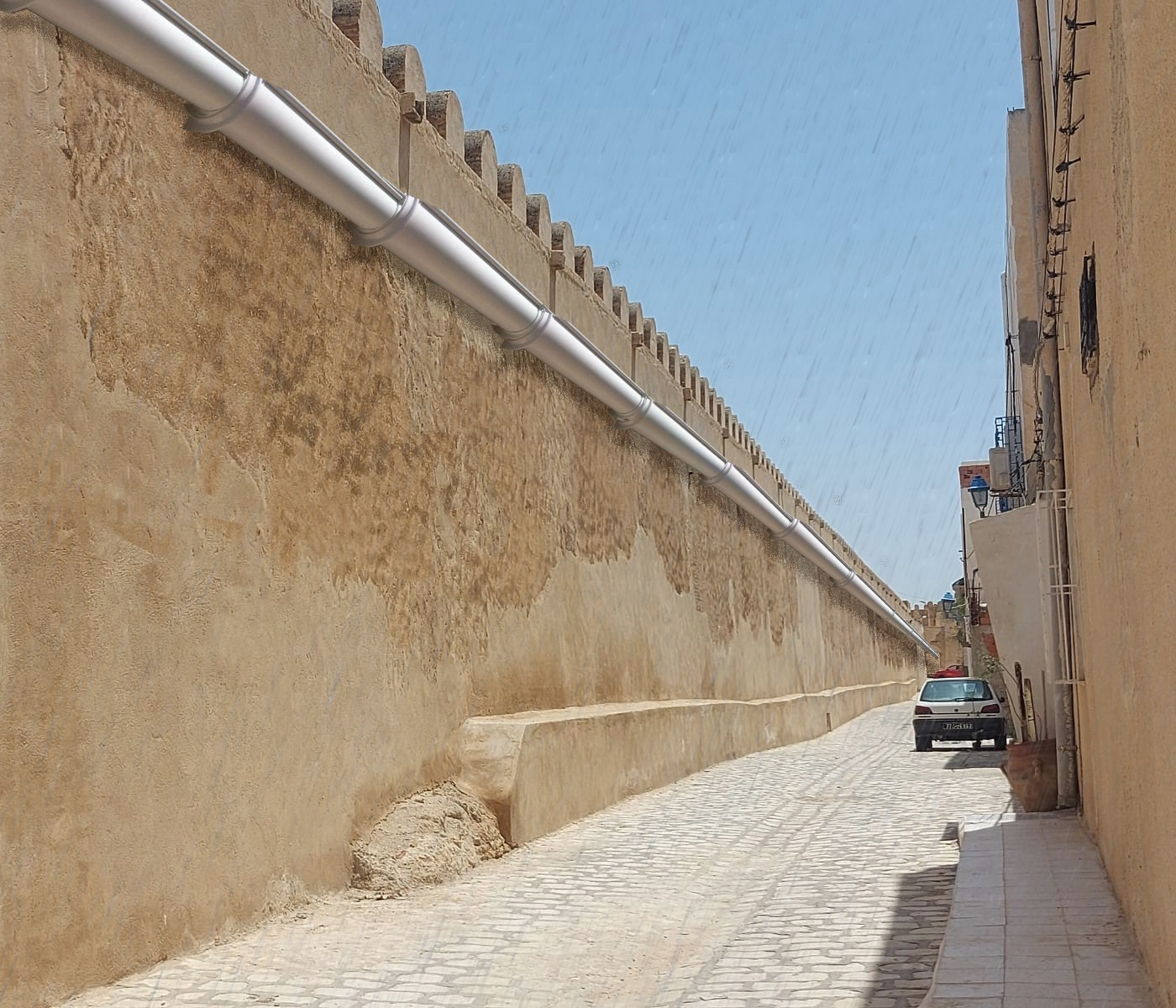

Our journey in Kairouan did not stop there, and we look forward to further investigating some of the above pathways. We are working closely with the municipality, institutional and civil society actors, and residents of the mosque district to test and experiment. But here again, we need to be careful with proposals that are costly in energy and money, and instead adopt a more humble and friendly attitude towards nature and its resources. This can only bring harmony to the conditions of human existence on our planet, and this is perhaps one of the key lessons of Kairouan and its water.
To be continued...

 Locations
Locations